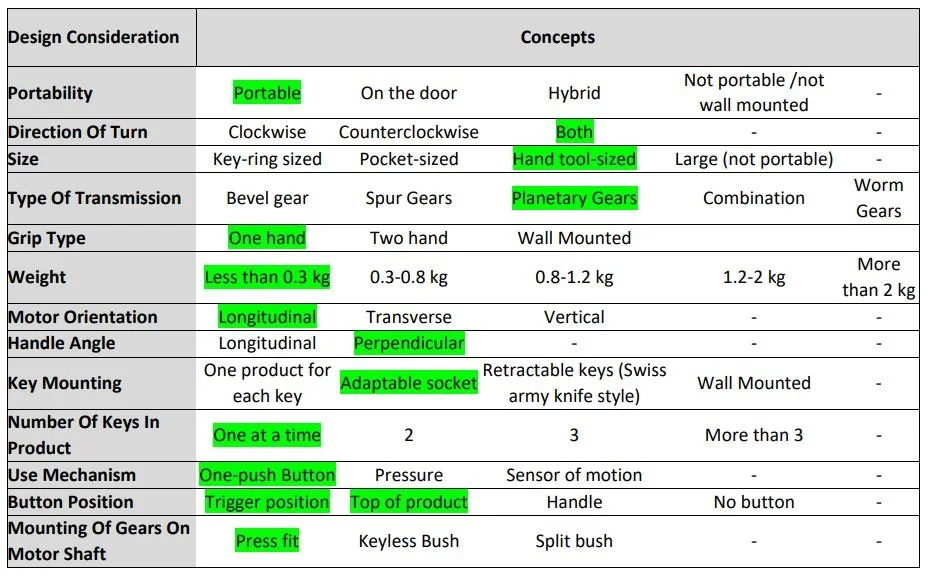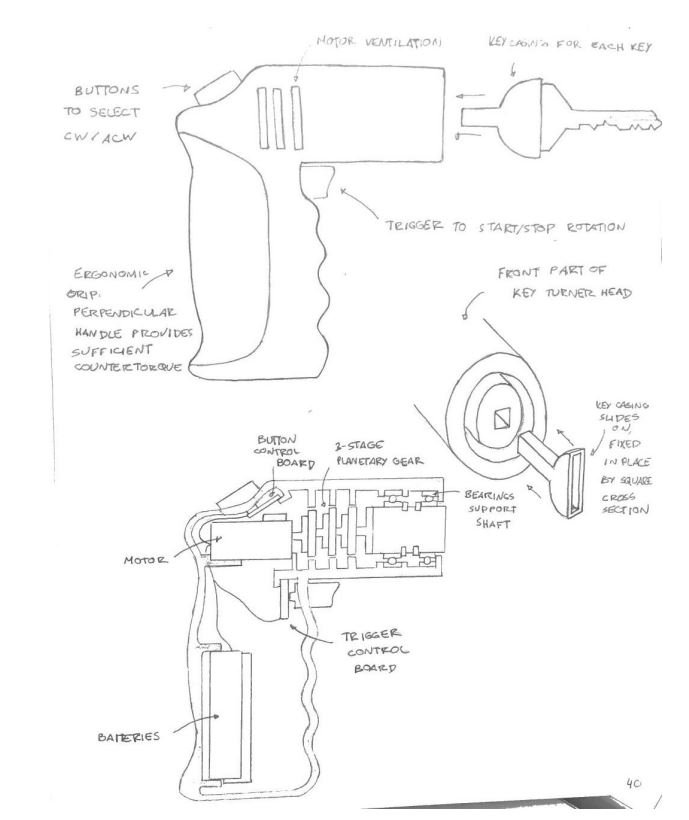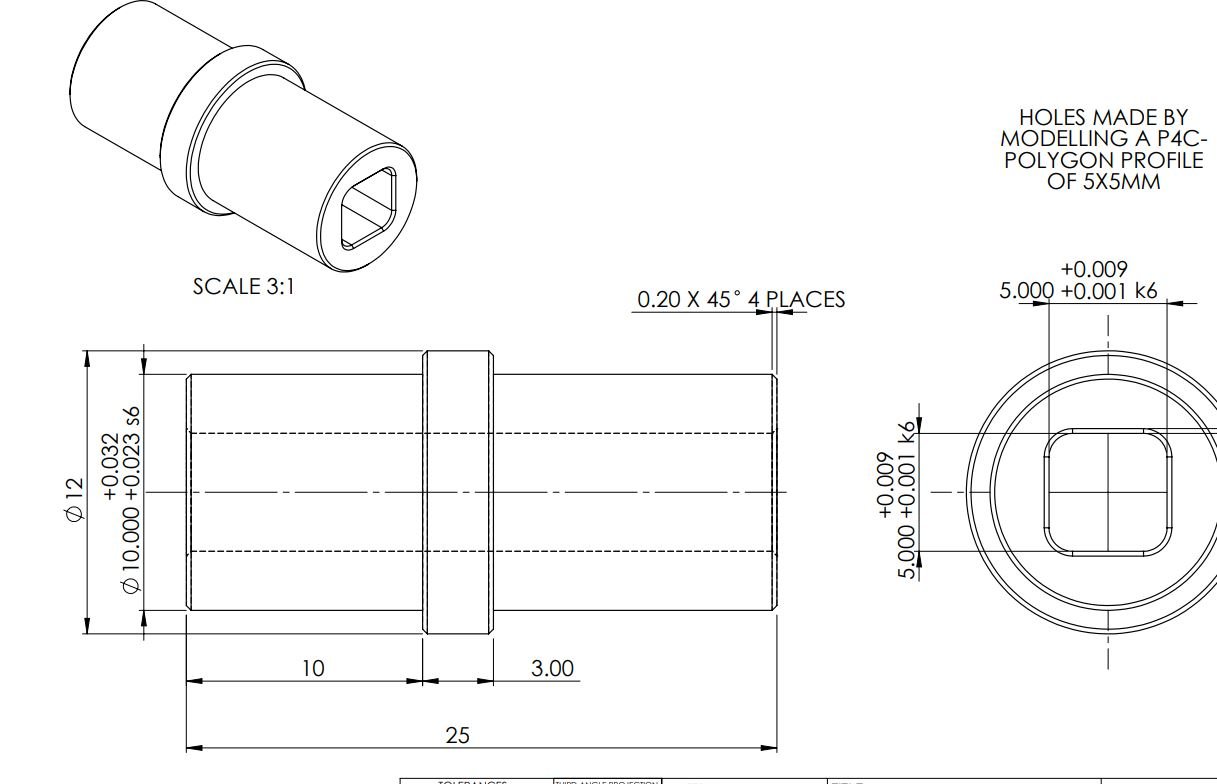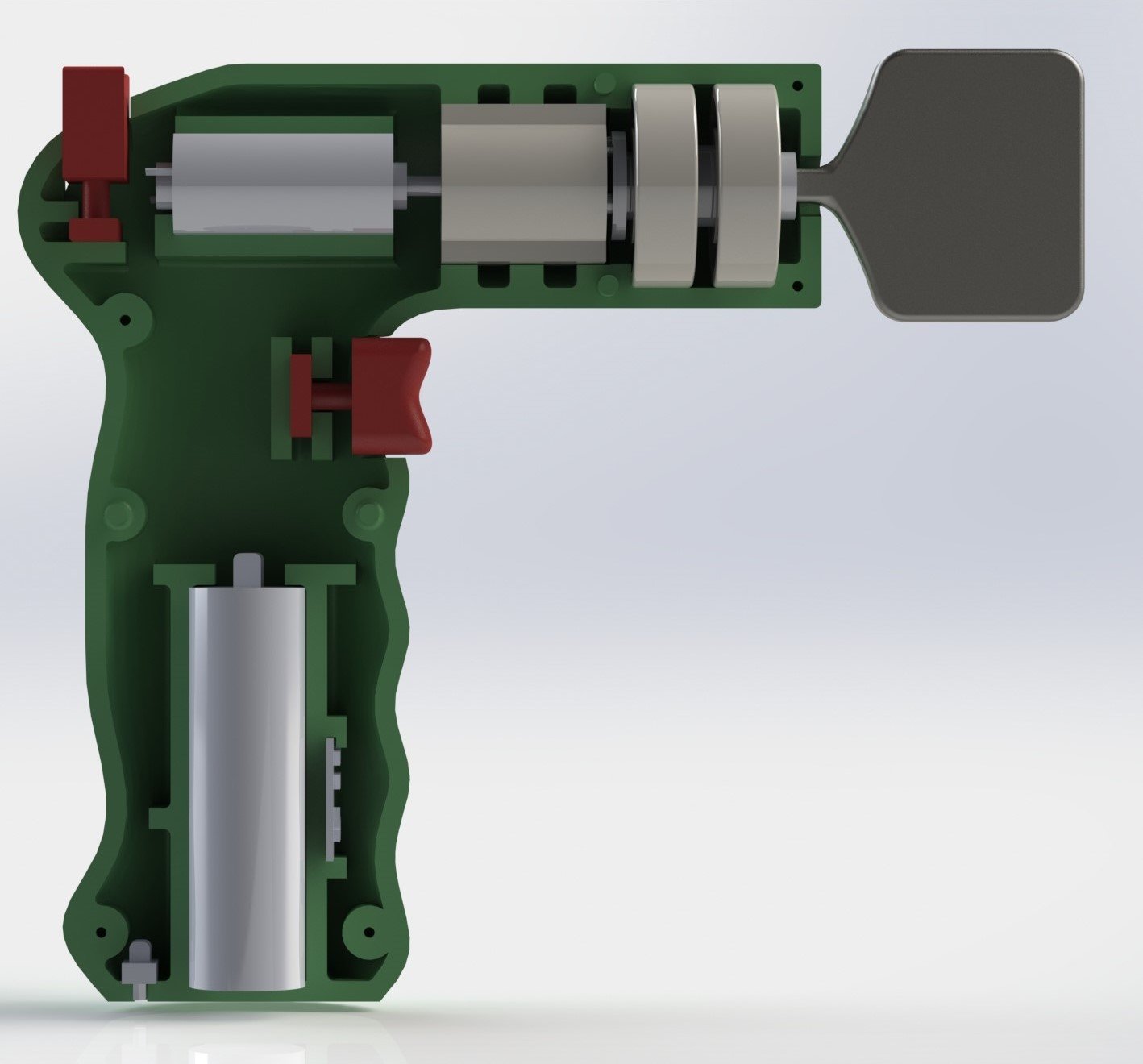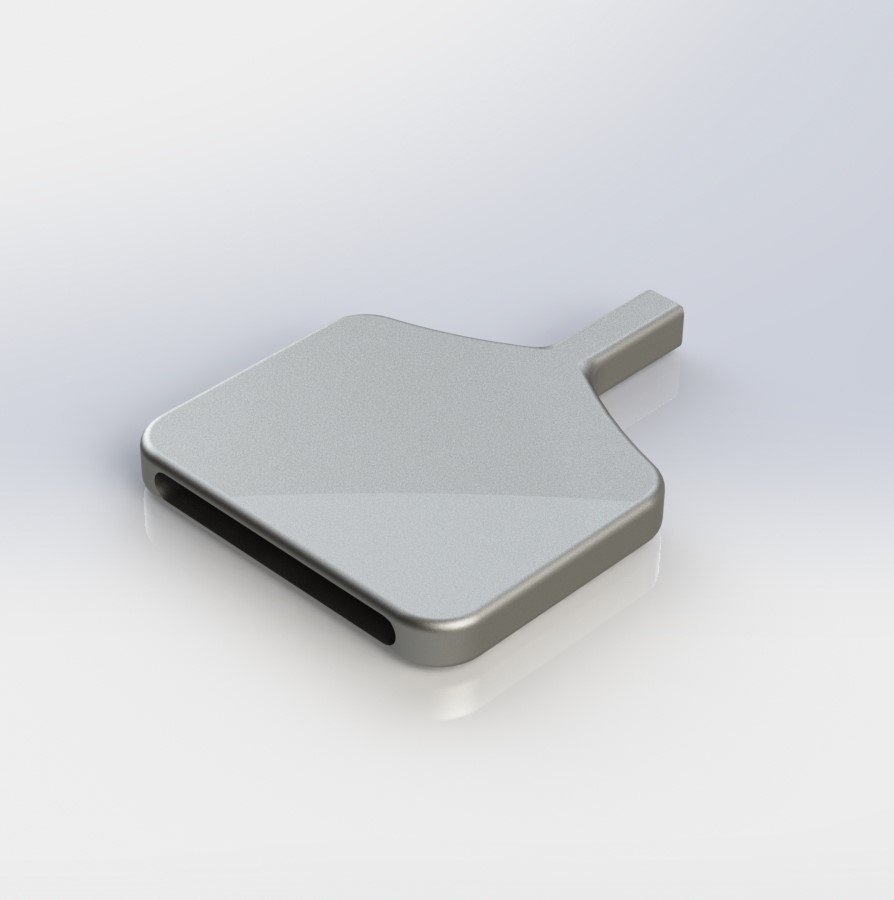Project Objective: The project aimed to design a device to assist people with reduced dexterity in opening locked doors. This was meant to address a common issue where individuals have difficulty exerting the necessary force to turn a key in a door lock.
Time Constraint: The project was conducted within a tight timeframe, referred as the "design week." This timeframe mimicked the real-world challenges faced by engineering consultants, where quick turnaround and effective problem-solving are essential.
Key Turner
A design solution to open doors for reduced dexterity users
Design Development Process
-
PDS and Concept Development
-
Embodiment Design
-
Detailed Design
-
CAD and Drawings
Our team began this project by formulating a comprehensive Product Design Specification (PDS) that outlined key design parameters. Subsequently, we conducted trade studies and executed morphological analysis on several preliminary designs, culminating in the selection of essential features to be embodied in the final product.
The final Key Turner consists of an ergonomic 'hand-drill' shaped outer casing produced from Polycarbonate - Acrylonitrile Butadiene Styrene which provided very good wear resistance, appropriate electrical insulation and could be easily recycled. Inside the outer casing there is a pair of rechargeable cells that power a small electric motor. This is then connected to a four-stage planetary gear transmission with an overall gear ratio of 306:1 that results in a torque of 1.5 Nm that was calculated to be sufficient for this application. A key holder which slots into the Key Turner was designed to be made out of steel and to have a thermoplastic insert that could be heated in warm water by the user to easily mould around keys of various shapes.
The overall result is a lightweight device (under 500 g) that is comfortable to hold and allows a user to unlock their door in under 10 seconds.
